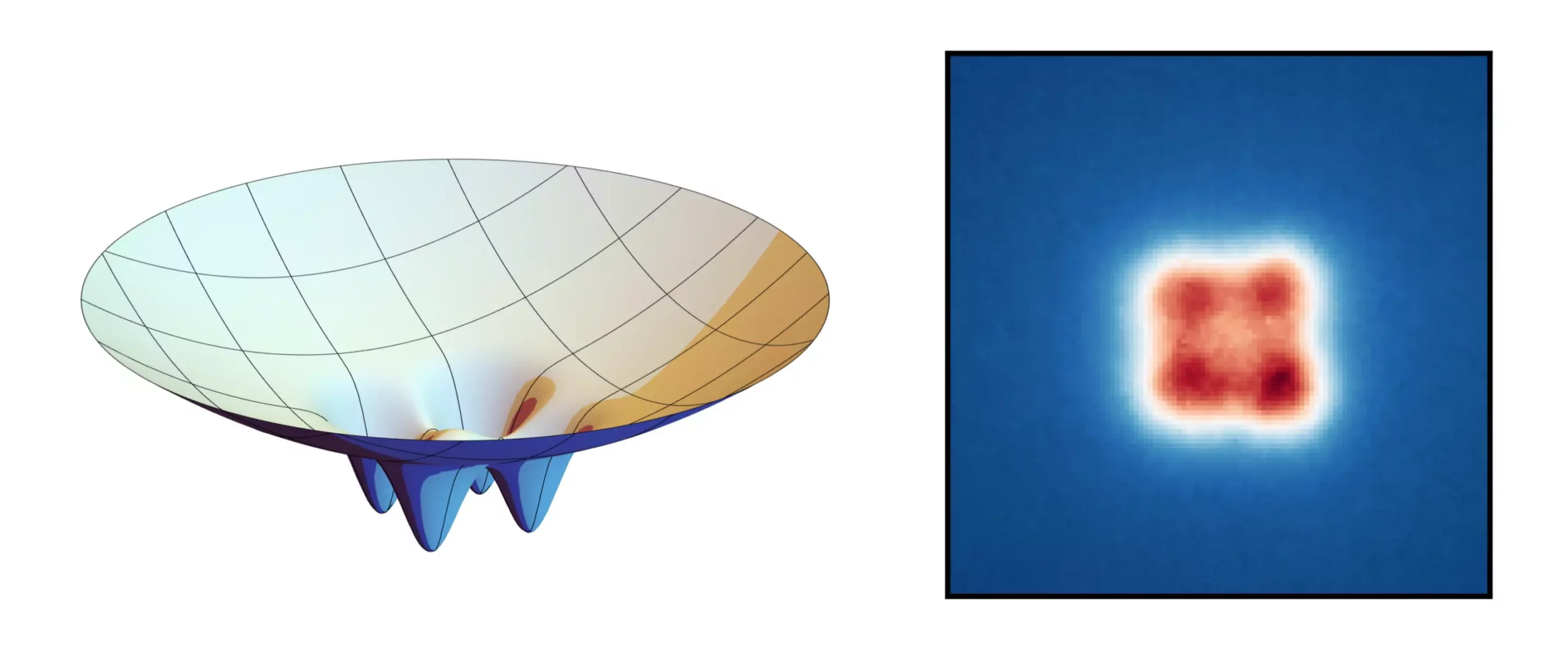In a groundbreaking study conducted by researchers at the University of Bonn, it has been discovered that thousands of light particles can combine to form a unique entity known as a “super photon” under specific conditions. This super photon, also known as a Bose-Einstein condensate, has the potential to revolutionize the field of communication by creating tap-proof exchange of information among multiple participants.
When a large number of light particles are cooled to an extremely low temperature and confined within a compact space, they lose their individuality and begin to behave as a single super photon. Traditionally, Bose-Einstein condensates appear as hazy spots of light, but the researchers at the Institute of Applied Physics at the University of Bonn have managed to imprint a lattice structure onto the condensate using tiny nano molds. By filling a small container with a dye solution and exciting the dye molecules with a laser, the researchers were able to create photons that bounce back and forth between reflective surfaces, cooling down until they condense into a super photon.
The key innovation in this study lies in the deliberate addition of small indents to the reflective surfaces, creating more space for light to collect in specific areas. This imprinting process results in the formation of a lattice structure within the condensate, similar to pressing a mold into sand and observing the imprinted pattern. By creating four regions where the condensate prefers to stay, the researchers have demonstrated the ability to control the behavior of the super photon.
The implications of this research are vast, particularly in the realm of communication and information exchange. By positioning the lattice sites closely enough together to allow for quantum mechanical interactions between them, the super photon remains as a single entity while enabling quantum entanglement. This phenomenon, where changes in one part of the system affect the other parts instantaneously, could pave the way for secure and tap-proof communication among multiple parties.
Looking ahead, the researchers speculate that by manipulating the form of the reflective surfaces, it may be possible to create Bose-Einstein condensates spread across even more lattice sites, potentially up to 20, 30, or beyond. This expanded capability could significantly enhance the security and confidentiality of communication networks, making it possible to facilitate tap-proof discussions and transactions among numerous participants simultaneously.
The study conducted at the University of Bonn represents a significant advancement in the field of quantum optics and communication technology. By harnessing the power of super photons and nano molds, researchers have demonstrated the feasibility of creating structured light patterns for practical applications. This research opens up new possibilities for secure communication networks and has the potential to shape the future of information exchange in a digital world.


Leave a Reply